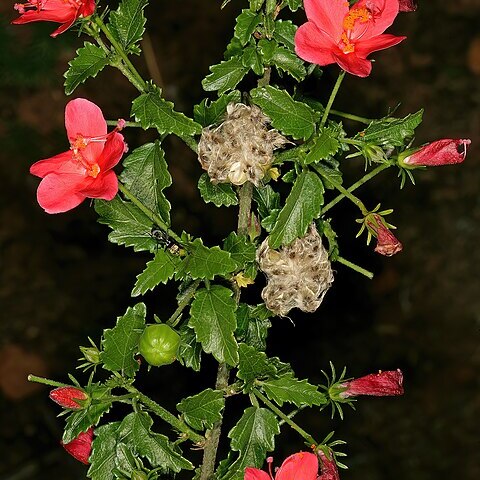Leaf-lamina up to 6 × 3 cm., ovate to narrowly lanceolate, sparsely to fairly densely stellate-hispid on both surfaces, apex acute to rather blunt, margin serrate, base obtuse to rounded or truncate 3–5-nerved; petiole up to 3 cm. long; stipules 5 mm. long, subulate.
Perennial herb, up to 2 m high. Hairs on young stems closely appressed. Leaves sparsely stellate-pubescent or stellate-hispid. Petals 10-20 mm long. Free parts of filaments 0.5-1.0 mm long. Style branches 7-15 mm long. Flowers red or pink.
Flowers 2–3 cm. in diam., red or pink? (perhaps hybrids), solitary, axillary; peduncle up to 8 cm. long, articulated 4–5 mm. below the apex.
Petals 10–20 mm. long, narrowly obovate, sparsely stellate-setose outside, glabrous inside.
Calyx up to 9–10 mm. long, stellate-setulose; lobes up to 8–9 × 1·5 mm., linear-lanceolate.
Virgate perennial herb up to 2 m. tall; stems appressed-stellate-setulose.
Staminal tube 7–12 mm. long; free parts of filaments 0·5–1 mm. long.
Epicalyx of 6–7 bracts; bracts 5–10 mm. long, linear.
Capsule 9 × 9 mm., subglobose, minutely pubescent.
Style-branches 7–15 mm. long.
Seeds with white silky floss.

